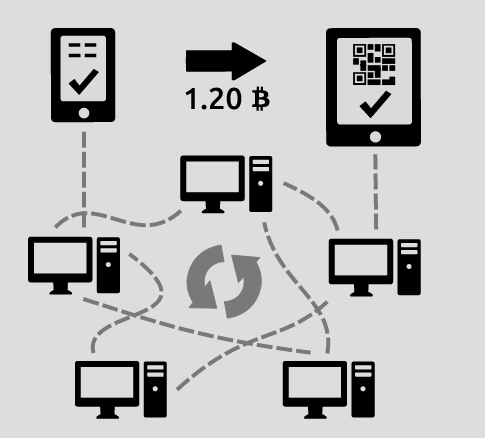How does Bitcoin work?
In 2008, an individual or group writing under the name of Satoshi Nakamoto published an open source program outlining the Bitcoin protocol. It is the first decentralized peer-to-peer payment network that is powered by its users with no central authority or middlemen. From a user perspective, Bitcoin is pretty much like cash for the Internet. Bitcoin quickly became popular with people who disagreed with the power governments had to devalue their savings by recklessly printing money and the irresponsible behaviour of the financial sector.
Satoshi’s whitepaper: Bitcoin: A Peer-to-Peer Electronic Cash System
From a user perspective, Bitcoin is nothing more than a mobile app or computer program that provides a personal Bitcoin wallet and allows a user to send and receive bitcoins with them. This is how Bitcoin works for most users.
Processing – mining
Behind the scenes, the Bitcoin network is sharing a public ledger called the “block chain”. This ledger contains every transaction ever processed, allowing a user’s computer to verify the validity of each transaction. The authenticity of each transaction is protected by digital signatures corresponding to the sending addresses, allowing all users to have full control over sending bitcoins from their own Bitcoin addresses. In addition, anyone can process transactions using the computing power of specialized hardware and earn a reward in bitcoins for this service. This is often called “mining”. Bitcoins are “mined” by everyone participating in the Bitcoin network. The software is open source, and once connected, “miners” attempt to solve a complex math problem proposed by an algorithm. The key here is that the math problem’s difficulty changes. Below is a short animated video which serves as an easy-to-digest introduction to Bitcoin Mining.
Bitcoin Hash-Rate Chart / Bitcoin Difficulty Chart
Balances – block chain
The block chain is a shared public ledger on which the entire Bitcoin network relies. All confirmed transactions are included in the block chain. This way, Bitcoin wallets can calculate their spendable balance and new transactions can be verified to be spending bitcoins that are actually owned by the spender. Think of it as a giant record book on the internet, that keeps tally of everyone’s bitcoin.
This is only a very short and concise summary of the system. If you want to get into the details, you can read and explore the Bitcoin wiki.

